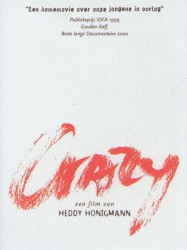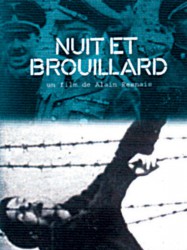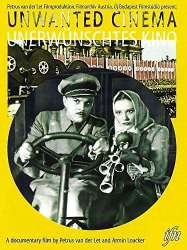Diary of a Housewife est un film de genre Documentaire
Diary of a Housewife (2001)

Si vous aimez ce film, faites-le savoir !
Genres Documentaire
Diary of A Housewife is a (2001) short film directed by Vinod Sukumaran. The screenplay is by Mohan Raghavan. The cinematographer of the film is Santosh Thundiyil, who is one of India's top cinematographers today. The film won the National Film Award for Best First Non-feature Film of a Director in 2002.
This film focuses on the concept of waiting and philosophical crisis of war. Through a young wife, it deals with philosophy of war, and the hopes and expectations related with it.
The film evolves around three female characters; a young lady, and old woman, and a girl.
Commentaires
Postez un commentaire :
Suggestions de films similaires à Diary of a Housewife
Il y a 8961 ayant les mêmes genres cinématographiques, 3561 films qui ont les mêmes thèmes (dont 288 films qui ont les mêmes 3 thèmes que Diary of a Housewife), pour avoir au final 70 suggestions de films similaires.Si vous avez aimé Diary of a Housewife, vous aimerez sûrement les films similaires suivants :

They Were Not Silent (1997)
, 30minutesGenres Documentaire
Thèmes Le racisme, Religion, Le monde du travail, Documentaire sur la discrimination, Documentaire sur le droit, Documentaire sur la guerre, Documentaire historique, Documentaire sur une personnalité, Documentaire sur la politique, Documentaire sur la religion, Politique, Religion juive, Documentaire sur la Seconde Guerre mondiale

Eyewitness (1999)
Origine Etats-Unis
Genres Guerre, Documentaire
Thèmes Le racisme, Religion, Documentaire sur l'art, Documentaire sur la discrimination, Documentaire sur le droit, Documentaire sur la guerre, Documentaire historique, Documentaire sur une personnalité, Documentaire sur la religion, Politique, Religion juive, Documentaire sur la Seconde Guerre mondiale
Note68%






Crazy (1999)
, 1h37Réalisé par Heddy Honigmann
Genres Guerre, Documentaire
Thèmes Maladie, Documentaire sur la guerre, Documentaire historique, Documentaire sur une personnalité, Documentaire sur la santé, Folie, Le handicap
Note75%






Mon voisin, mon tueur (2009)
, 1h20Réalisé par Anne Aghion
Origine France
Genres Documentaire
Thèmes Afrique post-coloniale, Le racisme, Documentaire sur la discrimination, Documentaire sur le droit, Documentaire sur la guerre, Documentaire historique, Documentaire sur une personnalité, Documentaire sur la politique, Politique
Note75%






Bombes à retardement (2007)
, 46minutesRéalisé par Guylaine Maroist
Origine Canada
Genres Documentaire
Thèmes L'environnement, Politique, Documentaire sur l'environnement, Documentaire sur la guerre, Documentaire historique, Documentaire sur le nucléaire, Documentaire sur une personnalité, Documentaire sur la santé, Documentaire sur les technologies, Politique
Acteurs Vlasta Vrána, Réal Bossé
En 1957, 40 jeunes soldats canadiens sont envoyés au Nevada pour servir de cobayes humains. Ils seront exposés à des explosions nucléaires quatre fois plus puissantes que celle d'Hiroshima, et cela à moins de 1 000 mètres. Ces hommes seront victimes de radiations et certains de leurs enfants naîtront avec des malformations. Bombes à retardement révèle une page sombre de l'histoire militaire au Canada. Basé sur des films d'archives inédits, ce film fait revivre l'expérience des soldats qui sont suivis 50 ans plus tard dans leur quête de justice auprès du gouvernement canadien.

Nuit et Brouillard (1959)
, 32minutesRéalisé par Alain Resnais
Origine France
Genres Guerre, Documentaire, Historique
Thèmes Le racisme, Religion, Documentaire sur la discrimination, Documentaire sur le droit, Documentaire sur la guerre, Documentaire historique, Documentaire sur une personnalité, Documentaire sur la religion, Politique, Religion juive, Documentaire sur la Seconde Guerre mondiale
Acteurs Michel Bouquet
Note85%





1955 : Alain Resnais, à la demande du comité d'histoire de la Seconde Guerre mondiale, se rend sur les lieux où des milliers d'hommes, de femmes et d'enfants ont perdu la vie. Il s'agit d'Orianenbourg, Auschwitz, Dachau, Ravensbruck, Belsen, Neuengamme, Struthof. Avec Jean Cayrol et l'aide de documents d'archives, il retrace le lent calvaire des déportés.
 , 52minutes
, 52minutesGenres Documentaire
Thèmes Esclavagisme, Le racisme, Documentaire sur la discrimination, Documentaire sur le droit, Documentaire sur la guerre, Documentaire historique, Documentaire sur une personnalité, Politique, Film catastrophe
Frederick Douglass and the White Negro is a documentary telling the story of ex-slave, abolitionist, writer and politician Frederick Douglass and his escape to Ireland from America in the 1840s. The film follows Douglass' life from slavery as a young man through to his time in Ireland where he befriended Daniel O'Connell, toured the country spreading the message of abolition and was treated as a human being for the first time by white people. His arrival in Ireland coincided with the Great Famine and he witnessed white people in what he considered to be a worse state than his fellow African Americans back in the US. The film follows Douglass back to America where he buys his freedom with funds raised in Ireland and Britain. Fellow passengers on his return journey include the Irish escaping the famine who arrive in their millions and would go on to play a major role in the New York Draft Riot of 1863 which Douglass could only despair over. The film examines (with contributions from the author of How The Irish Became White Noel Ignatiev amongst others) the turbulent relationship between African Americans and Irish Americans during the American Civil War, what drew them together and what drove them apart and how this would shape the America of the twentieth century and beyond.

Unerwünschtes Kino (2005)
, 1hGenres Documentaire
Thèmes Religion, Documentaire sur le monde des affaires, Documentaire sur le cinéma, Documentaire sur la guerre, Documentaire historique, Documentaire sur une personnalité, Documentaire sur la religion, Politique, Religion juive, Documentaire sur la Seconde Guerre mondiale
 , 1h39
, 1h39Genres Guerre, Documentaire
Thèmes Documentaire sur le monde des affaires, Documentaire sur le cinéma, Documentaire sur la guerre, Documentaire historique, Documentaire sur une personnalité, Documentaire sur la politique, Politique, Documentaire sur la Seconde Guerre mondiale
Acteurs Veit Harlan, Hilde Körber, Christiane Kubrick, Kristina Söderbaum
Note68%






Flower in the Gun Barrel (2008)
Origine Etats-Unis
Genres Documentaire
Thèmes Afrique post-coloniale, Le racisme, Documentaire sur la discrimination, Documentaire sur le droit, Documentaire sur la guerre, Documentaire historique, Documentaire sur une personnalité, Documentaire sur la politique, Politique
Note80%





To a large extent, the film consists of interviews with genocide survivors, many of whom were children in 1994. In all, over thirty survivors, perpetrators, and experts were interviewed for the film. In these interviews, the survivors discuss what it means to be a Rwandan and to live next door to people who killed their families. The survivors describe how they deal with their country's request that they forgive one another and move on, so that Rwanda can rebuild and unify itself. Perpetrators' views illuminate the madness that seized the culture in 1994; exploring the experience of apologizing to victims, and examining what it is like to be looked at as a murderer in Rwandan society.
 Connexion
Connexion